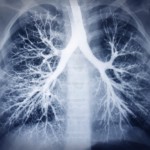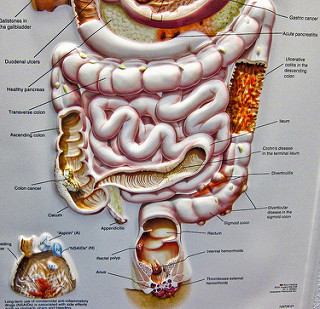Pneumonia vs. pneumonitis, differences in symptoms, causes, and treatment
 Pneumonia and pneumonitis are two serious respiratory infections, which – if not treated early on – can lead to life-threatening consequences. Although both conditions affect the lungs, there are distinct differences that help differentiate between the two conditions.
Pneumonia and pneumonitis are two serious respiratory infections, which – if not treated early on – can lead to life-threatening consequences. Although both conditions affect the lungs, there are distinct differences that help differentiate between the two conditions.
Breathing problems are a primary characteristic of either infection. Impaired breathing can limit oxygen supply to the cells, causing them to die off, which contributes life-threatening consequences of either infection.
The biggest difference between pneumonia and pneumonitis is that pneumonia is caused by an infection and pneumonitis can be caused by other factors aside from infections – we will outline the exact causes later on. But first, Is pneumonia contagious?
Here we will outline the key differences and similarities between pneumonia and pneumonitis, so you can have a better understanding of either condition.
Aspiration pneumonitis and pneumonia
Pulmonary aspiration is the inhalation of toxic substances to the lungs, thus causing infection or illness. Risk factors for aspiration include impaired cognition or level of consciousness, impaired swallowing, vomiting, gastrointestinal devices and procedures, dental procedures, respiratory devices, and gastroesophageal reflux disease (GERD).
Signs and symptoms of aspiration pneumonia include chronic mild dyspnea, fever, weight loss, and cough with foul-tasting sputum.
Pneumonia vs. pneumonitis comparison table
Below is a simple go-to comparison chart to help you easily distinguish the differences and similarities between pneumonia and pneumonitis.
Pneumonia vs. Pneumonitis
Pneumonia
Pneumonitis
· Inhalation of toxic gases, dust, or molds
· Adverse reaction to drugs
· Complication of autoimmune diseases such as systemic lupus erythematosus (SLE) Affected lung part Alveoli or interstitium Alveoli or interstitium Is it contagious? Yes No Who can get it? Anyone, but especially infants, elderly, and those with weak immune system Persons who vomit during alcohol intoxication, farmers sensitive to dust and molds, workers in chemical or textile industry, individuals with low immunity or autoimmune diseases Symptoms Coughing up sputum, shortness of breath, fever (or no sputum or fever) Shortness of breath, dry cough (occasionally, low-grade fever) Symptom duration A week to few months Few hours to few days (months or even lifelong if it becomes chronic) Diagnosis X-ray, blood and sputum culture CT, lung biopsy Treatment Antibiotics, antivirals, antifungals, oxygen Steroids, oxygen Prevention Avoid contact with infected persons Avoid dust and mold, or wear a protective mask
Comparing pneumonia and pneumonitis: Signs and symptoms
Symptoms of pneumonia include cough with sputum, fever, shaking chills, shortness of breath, sharp or stabbing pain in the chest, headache, excessive sweating and clammy skin, loss of appetite, low energy, fatigue, and confusion.
Symptoms of pneumonitis include difficulty breathing, cough, fever, shortness of breath, loss of appetite, and unexplained weight loss.
Difference between pneumonia and pneumonitis causes
 Pneumonia can be caused by a bacterial or viral infection. In rarer cases, it can be caused by a fungus. Conditions that weaken the immune system – like smoking, COPD, and chemical exposure – can cause damage to the lungs, thus making them more susceptible to bacteria that can cause pneumonia.
Pneumonia can be caused by a bacterial or viral infection. In rarer cases, it can be caused by a fungus. Conditions that weaken the immune system – like smoking, COPD, and chemical exposure – can cause damage to the lungs, thus making them more susceptible to bacteria that can cause pneumonia.
Pneumonitis is inflammation of lung tissue due to other factors aside from microbial infection. Causes of pneumonitis include drugs, molds and bacteria, bird exposure, and radiation treatments.
Pneumonitis vs. pneumonia: Risk factors and complications
Pneumonia risk factors include being under the age of two or being over the age of 65 – as these age groups have weaker immune systems, having a chronic disease, being a smoker, and being hospitalized – especially if you are on a device that helps you breathe.
Complications of pneumonia include lung abscess, fluid accumulation in the lungs, difficulty breathing, and organ failure due to bacteria entering the bloodstream.
Risk factors of pneumonitis include farming, exposure to birds, and use of hot tubs and humidifiers. Some cancer treatments, too, can increase the risk of pneumonitis, including chemotherapy drugs and radiation.
Complications associated with pneumonitis may cause irreversible lung damage. Chronic inflammation damages the air sacs, resulting in a condition known as pulmonary fibrosis, which can lead to heart failure, respiratory failure, and death.
Difference in pneumonia and pneumonitis: Diagnosis and treatment
 In case of pneumonia, your doctor will analyze your sputum to determine if the cause is bacterial or viral. A chest X-ray will also be conducted. Your doctor may run blood work to check your white blood cell count, which can reveal severity of the illness. High levels of white blood cells indicate that your body is warding off a more serious infection.
In case of pneumonia, your doctor will analyze your sputum to determine if the cause is bacterial or viral. A chest X-ray will also be conducted. Your doctor may run blood work to check your white blood cell count, which can reveal severity of the illness. High levels of white blood cells indicate that your body is warding off a more serious infection.
Pneumonia is often treated with antibiotics or antiviral medication. If high fever is present, your doctor may also prescribe antipyretics (fever-suppressing medications). Cough medications may also be used to relieve congestion. With proper rest and hydration, pneumonia will only stick around for a couple of weeks, and you will be back on your feet once again.
Pneumonitis is diagnosed with imaging tests such as chest X-rays and CT scans, pulmonary function test, bronchoscopy to take samples from the lungs, and surgical lung biopsy, which is used to take larger samples from the lungs.
Treatment for pneumonitis involves corticosteroids and oxygen therapy. Corticosteroids suppress the immune system to help reduce inflammation of the lungs. Corticosteroids do come with side effects, however, so limited duration is key. Oxygen therapy is utilized if you are having severe difficulty breathing. Some patients may only need it when they are exercising or sleeping, while others may need it all the time.
-
Does Cabbage Soup Diet Help You To Loss Weight
If you have been trying to lose weight f
-
The Reality of the Calorie
The next time you抮e dining out, you might not be able to take ref
-
Nutrition And Diet
Nutrition Nutrition is the provision, to cells and organisms, of th
-
Important Vitamins Needed For Weight Loss
Weight control of body or functions related with weight - like hunger,
-
Moms Lose The Fat One Day At A Time
Just like great cities were not built in
-
Weight Loss What Is The Best Way To Lose Weight
The best way to lose weight is to eat fewer calories and increase your
- DON'T MISS
- Diet Information & High Protien Low Carb Diet
- Boost Metabolism Following Forty
- Exactly How To Shed 12 Lbs Extremely Fast
- What To Choose – Fat Binder Or Fat Blocker Pills?
- The Foolproof Diet
- Summer Weight Loss Camps Are A Great Way To Learn About Nutrition And Diet.
- The 5 Most Common Reasons You Aren’t Losing Body Fat
- Weight Watchers Restaurant Guide
- The Best Diets To Lose Belly Fat Fast - 3 Tips To Lose Belly Fat
- Skinny Fat – Being Thin Does Not Always Mean You’re Lean




